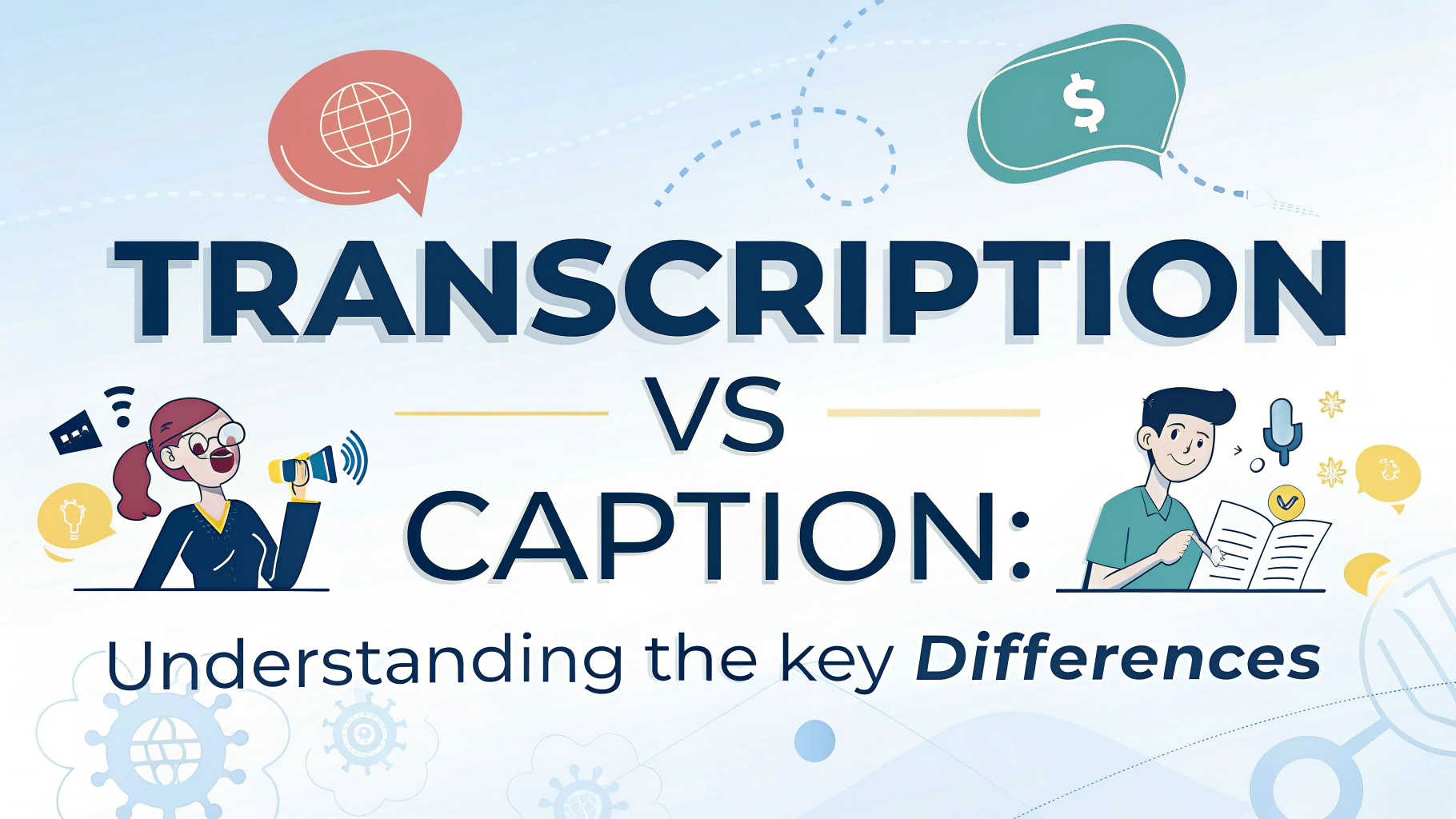Transcription and captioning are both methods of converting spoken content into text, but they serve different purposes and have distinct features.
Transcription is the process of converting audio or video speech into a written text document, often without timing information.
Captions, however, are text displayed on videos that not only transcribe spoken words but also include timing to sync with the video, often showing who is speaking and non-speech sounds.
Understanding these differences helps you choose the right option for accessibility, content repurposing, or legal compliance.
Qu'est-ce que la transcription ?
Transcription involves listening to audio or video content and converting the spoken words into a plain text document. Transcripts do not usually contain timing information or synchronize with video playback. They are commonly used for meeting notes, interviews, podcasts, legal documentation, and research purposes.
- Transcripts are easy to search and reference.
- They provide a full textual record of spoken content.
- Transcription can be done manually or with AI-powered tools.
What Are Captions?
Captions are text displayed on a video screen that correspond to the audio portion, designed to make videos accessible to deaf and hard-of-hearing viewers. Captions include timing information to appear exactly when the audio occurs and often identify speakers and describe background sounds (e.g., [music playing], [door slams]).
- Captions are embedded or overlaid on videos.
- They come in formats like SRT, VTT, and SCC.
- Captions improve accessibility and help with viewer comprehension.
Key Differences Between Transcription and Captioning
| Fonctionnalité | Transcription | Sous-titrage |
|---|---|---|
| Objectif | Create a text record of audio content | Make videos accessible with synced text |
| Timing Information | Generally no | Includes precise timing codes |
| Format | Plain text documents | Specialized subtitle file formats (SRT, VTT) |
| Display | Separate from media | Overlaid on video during playback |
| Additional Details | Usually text only | Includes speaker ID and sound descriptions |
When to Use Transcription vs Captioning
- Utilisation transcription if you need a written record for reference, research, or documentation.
- Utilisation captioning if you want to make video content accessible to all audiences, including those who are deaf or hard of hearing, or if you need to comply with legal accessibility standards like the ADA.
How Are Transcriptions and Captions Created?
Both can be created manually by professional transcribers or generated automatically by AI tools like VOMO. However, captions require additional steps to sync text with video timing and may need formatting adjustments to fit screen space. Many transcription services offer both captions and transcripts as part of their offerings.
Benefits of Using Both Transcripts and Captions
Using transcripts alongside captions can enhance content accessibility, SEO, and user engagement. Transcripts allow easy content indexing and keyword search, while captions improve video comprehension and inclusivity.
Conclusion
While transcription and captioning both convert de l'audio au texte, their differences lie in timing, format, and usage. Choosing the right option depends on your content goals—whether you need a textual record or want to improve video accessibility. Understanding these distinctions ensures your media is both useful and compliant.


